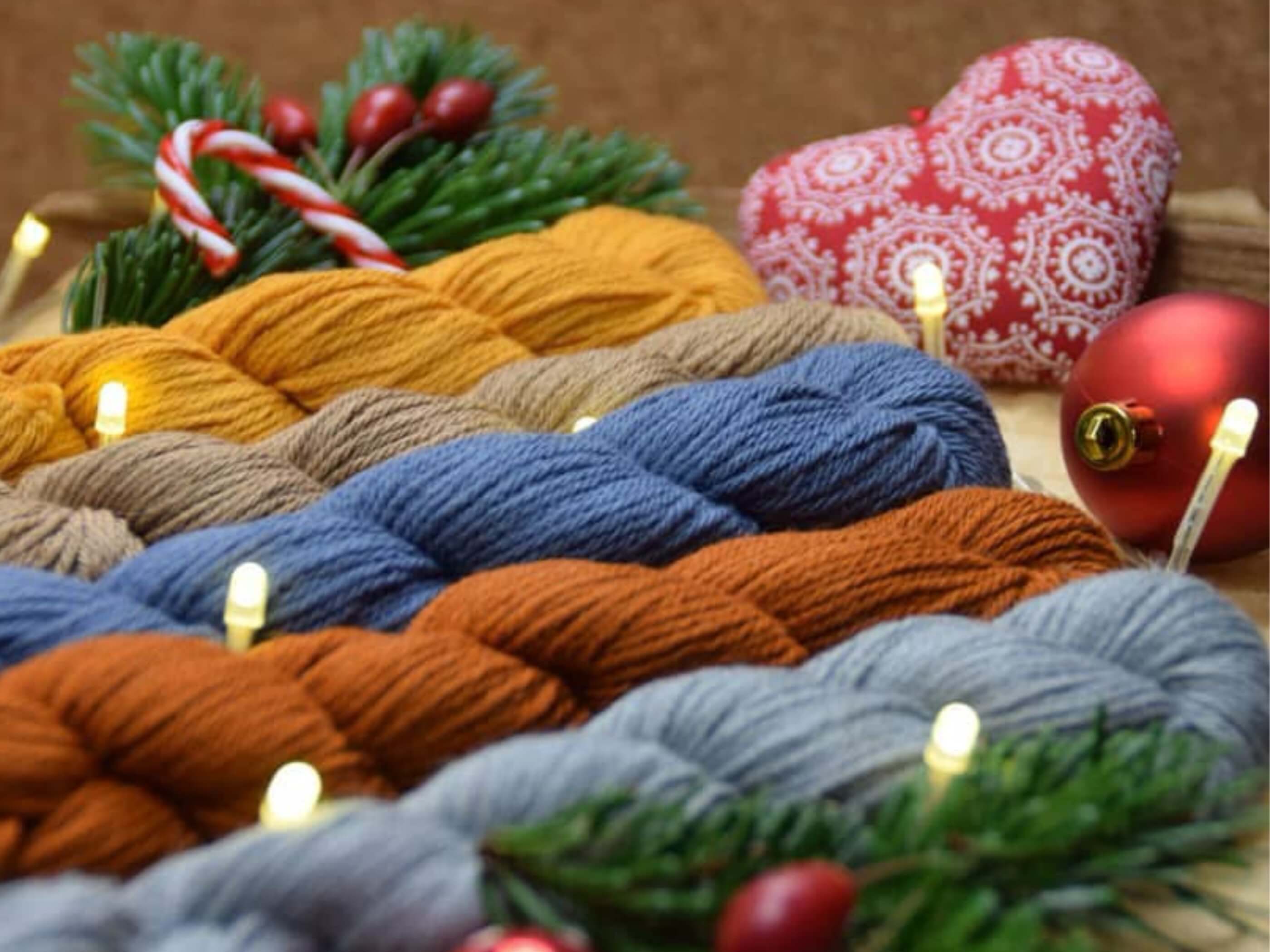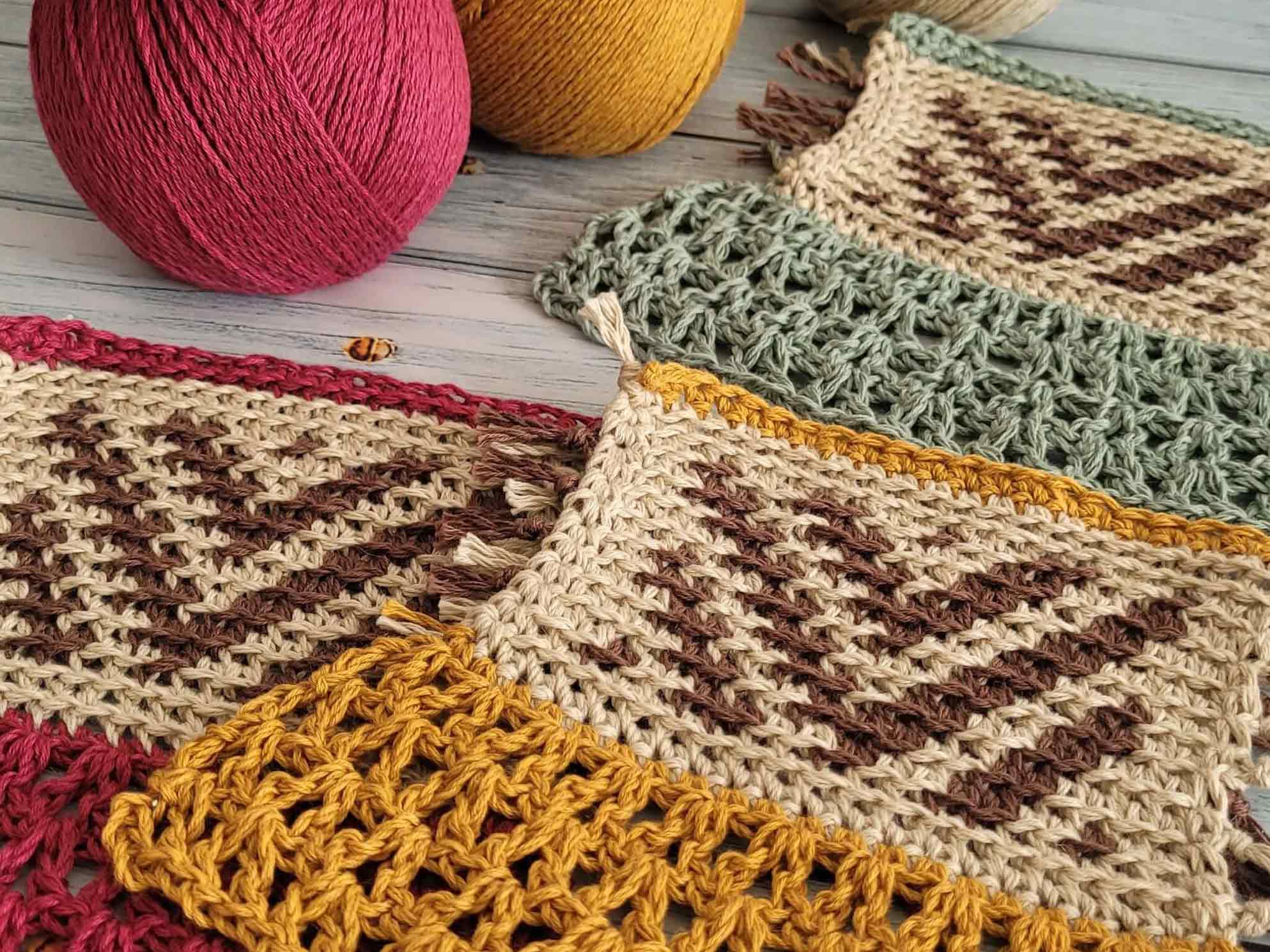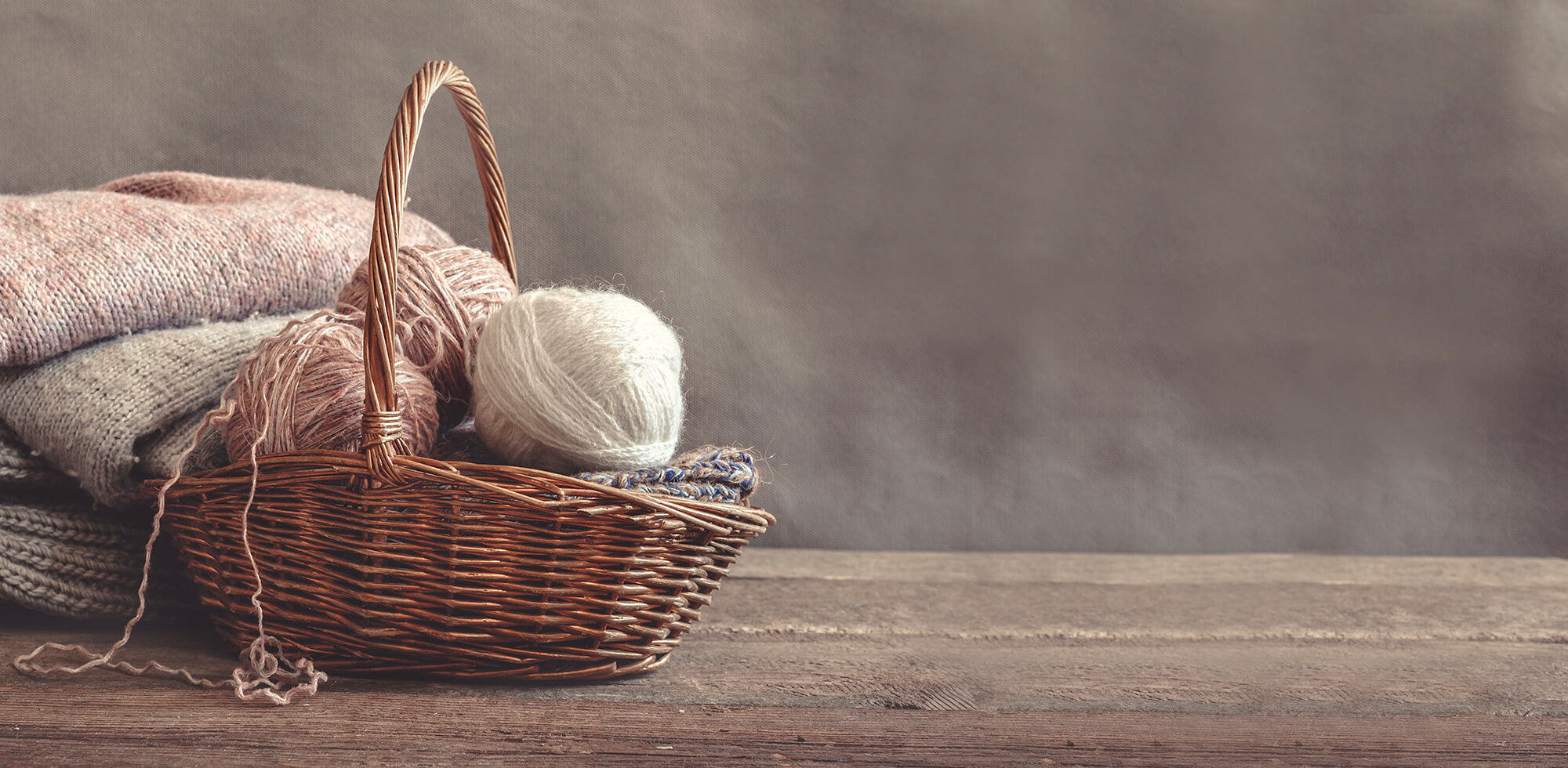By Claudia Ostrop
We all know the feeling. You fall in love with a knitting design, spend ages selecting the perfect yarn, and then weeks knitting it, only to find out in the end: it doesn't fit at all.
You’re probably taller, shorter, curvier, or slimmer than the standard measurements that the pattern was written for. But you know what? That’s completely okay! The beauty of knitting is that you can make patterns “work” for you. With a few right adjustments, you can almost always align a pattern perfectly to your individual measurements!
Building on our recent blog post, “The Knitter’s Guide to Taking Accurate Measurements for a Perfect Fit”, where we detailed how and where to take accurate measurements, today we’ll guide you on how to “reconstruct” a knitting pattern using those measurements.

Why You Should Consider Altering a Pattern
Knitting and crochet patterns, like sewing patterns, are based on standard measurements; however, very few individuals fit perfectly into these size charts. Should you then resign yourself to the idea that a sweater or cardigan will fit “just somewhat”
You probably knit because it’s fun or relaxing. So, must we complicate things further? Do you have to modify or even recalculate a pattern? It’s true, knitting should definitely be a relaxing and enjoyable activity – but how frustrating is it when you’ve spent hours (or rather: weeks!) on something, only to end up with a garment that doesn’t fit properly and ends up in a corner somewhere?
The beauty of knitting is its ability to be able to tailor a garment to individual preferences.. When you adapt a pattern to your measurements, the end result fits. And once you know where and how to make adjustments, it’s really not rocket science!

Typical Reasons Why Pattern Measurements Don’t Fit Perfectly
In nearly all knitting patterns for tops, the bust measurement is stated as “the” main measurement. That’s generally okay if you have a “uniform” body shape.
It becomes challenging if, for example, you have a large bust but narrow shoulders. Or if you have little bust but fairly wide hips. You might have a slim torso but very muscular upper arms. If you choose the size to knit based solely on the bust, a sweater might, for example, hang excessively on the shoulders or pull at the hips or upper arms.
From Measuring Tape to Needle

In our blog post “The Knitter’s Guide to Taking Accurate Measurements for a Perfect Fit,” we recently described how to take measurements that help you get as close as possible to the perfect top. In addition to the bust, you’ll need your shoulder width, back length, and the circumferences of your waist, hips, and (upper) arms. Neck circumference is also useful, as are the lengths of your torso and arms.
When you put in the effort to figure out all the measurements accurately, it makes sense to note them down somewhere you can easily access them. Do you have a knitting notebook? If you are active on Ravelry, you can note them there in a project. The same goes if you are using a knitting app.
From Theory to Practice

So, you know your measurements and have a pattern at hand. Every properly written knitting pattern should start or end with a schematic showing the key measurements.
Please note that we assume your pattern includes multiple sizes. Although there are patterns designed for a single size, most contemporary designs, including Pascuali patterns, are graded to accommodate a broad range of sizes, from small to large.
The measurements for each size often refer to a specific bust circumference.
For example: “Size S, M, L fits a bust circumference of 92, 90, 98,... cm.”
Sometimes, only the measurements of the finished top are provided, along with a note indicating how much ease (the “positive ease”) should be added in relation to your own bust circumference for the best fit. In that case, take your bust measurement, add the desired ease, and choose your size based on the bust measurement of the finished piece.
Now compare your measurements with those of the pattern.
The bust circumference is the starting point. Let’s say you need to knit size M based on that.
Now take all the measurements (usually in a schematic drawing) provided for the design and compare them with your body measurements. You can also take a comparable well-fitting top from your wardrobe for a reference: this can be helpful because the measurements given in the pattern refer to the finished piece.
Note where there are discrepancies. Some things you might just intuitively think about, e.g., the bust being “too large” for narrow shoulders, or you simply know that you have very muscular upper arms.

My Measurements Don’t Match the Standard Size. What Now?
You will probably conclude that you are a perfect size M in one area of your body, a size S in another, or perhaps somewhere you are more of an L than an M.
This is where individual adjustments come into play.
Patterns with multiple sizes can be viewed as a building block set, as you’ll need to create smooth transitions between sizes.
Using examples, we now want to explain how you can reconstruct a pattern for yourself without much calculation. We'll describe the changes based on a seamlessly knitted top-down sweater, which can either be designed as a round yoke or with raglan seams.

Narrow Shoulders, a Bit More Bust
Based on your bust measurement, you've determined that you should knit the sweater in size M. However, since your shoulders are rather narrow, a smaller size in the neck/shoulder area would be more flattering for you – no problem!
Cast on the number of stitches for size S and begin following the instructions for that size. It’s a good idea to note the stitch count for size M at the point where the sleeves will be separated, as you’ll need this number to ensure enough room for the bust.
Additional Increases in the Yoke
Additional increases need to be incorporated into the yoke, beyond those specified for size S.
In a round yoke, you can either add the extra stitches in an additional round or include them in the final increase round. Regardless of whether you opt for an extra increase round or integrate the additional stitches into the last set of stitches, make sure they are evenly distributed around the round.
In a raglan construction, the process is similar. The additional stitches needed for size M are added as extra raglan increases. Size S is likely to reach the point of separating the sleeves a few rounds sooner than size M, giving you room for extra raglan increases to achieve the required stitch count.
Sometimes, raglan increases are not made every other round, but with greater spacing: a good opportunity to sneak in an additional increase round in between.
It is important that you do not add the missing stitches all at once but distribute them evenly.
Adding More Stitches Under the Arms
Another way to gain a bit more width is to add extra stitches in the underarm when separating the sleeves. However, be careful not to add too many, as this can quickly create a bulge under the arm.
If you want more stitches for the body but not for the sleeves, you can “borrow” (a few!) sleeve stitches and add them to the front and back when separating. If you then cast on additional stitches under the arm, these will not significantly impact the sleeve count.

Strong Bust with Narrow Hips
Do you have a strong bust but narrow hips? To prevent the sweater from being too baggy at the bottom, you can take some countermeasures.
Decreases Towards the Hips
Place stitch markers directly on the side seams. Before and after each marker, you can decrease two stitches on each side (similar to how you would for sleeve decreases). If you begin these decreases after you've passed the bust, aim to decrease approximately every 4 inches (10 cm), doing this about 2 to 3 times for a more tailored fit at the hips.
More Space for the Bust with Short Rows
If you want a bit more space for the bust – or if the sweater tends to ride up at the front lower hem due to your bust – short rows are a great solution.
This adds a few extra rows in the bust area. You begin a few inches below the armpit and knit back and forth with short rows. Unfortunately, we cannot provide a quick recipe here, as the numbers depend heavily on gauge and cup size, but we still wanted to mention this modification option.

Narrower Up Top, Wider Hips
If your hips are relatively wide compared to your upper body, you might not want to have the necessary width already at the shoulder and bust area. In this case, you can increase stitches to create a slight A-line shape for the sweater. Begin this approximately at waist level. This is like the decreases mentioned above, but in reverse.
Strong Upper Arms
If you find that size M fits well overall but feels a bit snug around the arms, don't worry! For sweaters with straight (vertical) armholes, you can easily knit back and forth until the armhole reaches your desired depth. However, it can be slightly more challenging with seamless round yoke and raglan constructions, where adjustments require a bit more planning to ensure a comfortable fit.
Additional Sleeve Width with Raglan Increases
In raglan increases, stitches are typically added for the sleeves less frequently than for the front and back. You can leverage this by incorporating increases for the sleeves during rounds that would otherwise focus solely on the body. Alternatively, you can knit a few more rounds before separating for the sleeves and make increases for the sleeve stitches during that time.
It's also possible to cast on extra stitches under the arms; however, to avoid adding width to the body, you will need to decrease these additional stitches later.
Width in Round Yoke Constructions
In round yoke designs, stitches are increased evenly across all rounds. The number of stitches that will later become the sleeves is determined solely by the number of stitches set aside. You can take advantage of this. You can set aside a few more stitches for the sleeves. To ensure that the front and back do not lack these stitches, you should cast them on in addition to the stitches specified in the pattern for the underarm. Important: the newly cast-on stitches will later become sleeve stitches, so be careful not to redistribute and cast on too much!
Since you now have more sleeve stitches than indicated for your size, you should use the next higher size for the later sleeve decreases.

Adjusting Body and Sleeve Length
This is quite logical, but it should still be mentioned: to achieve more or less length in the body and/or sleeves, you simply knit more or fewer rounds before finishing. To find the appropriate length, you can try the sweater on intermittently.
If the body isn’t knitted straight down but is, for example, tapered, you should ensure that the overall look remains coherent and that any necessary shaping is taken into account beforehand.
If the sleeves only need to be moderately lengthened or shortened, simply stop a bit earlier or knit a little longer. However, if a three-quarter sleeve needs to become a long sleeve or vice versa, you must consider whether the decreases are still evenly distributed along the sleeve length. You may need to adjust the spacing between the decreases accordingly.
A Few Final Tips
It’s really helpful to try on the sweater (or any piece knit seamlessly from top to bottom) along the way, whether you are strictly following the pattern or have just made an adjustment.
If it doesn’t fit well, it’s better to unravel a small section early on than to be disappointed in the end! Adjusting a knitting pattern to fit your body is not rocket science, but it does require some practice and patience. Your first attempt may not be perfect, but with each project, you’ll become more adept at making adjustments that fit your body.
It’s important to know your own measurements and be clear about your body shape. Many knitters do tend to knit too large.
In this context, it's important to, once again, emphasize the significance of knitting a swatch. Even the best adjustments and the most stunning designs won't hold up if you don't knit with the gauge specified in the pattern!
So, we encourage you to take the time to knit a proper swatch, wash it, and let it dry. While it’s tempting to dive right into that enticing new pattern, remember that the time invested in creating a swatch is minimal compared to the frustration of ending up with a garment that doesn’t fit properly due to being "accidentally" too large or too small.
Happy knitting!





1 comment
Barbara
Danke für die hilfreichen Tipps.
Danke für die hilfreichen Tipps.